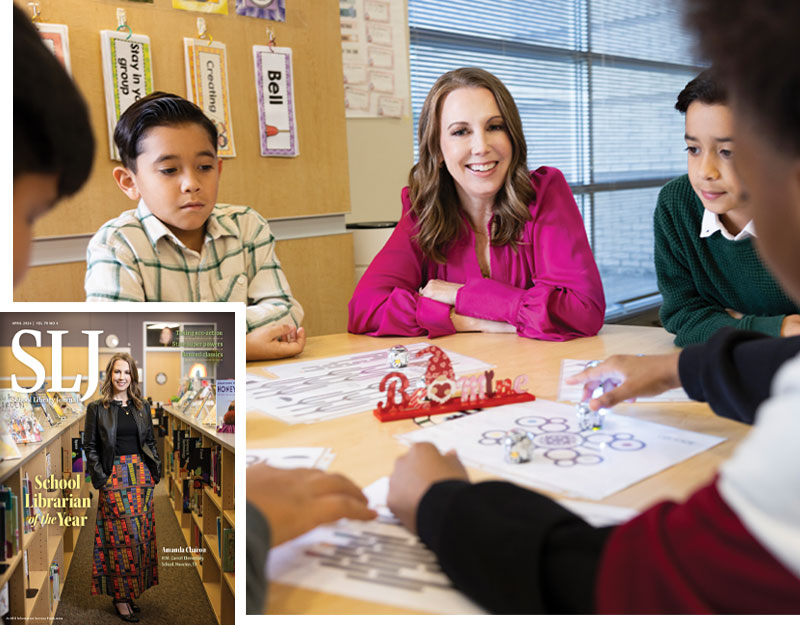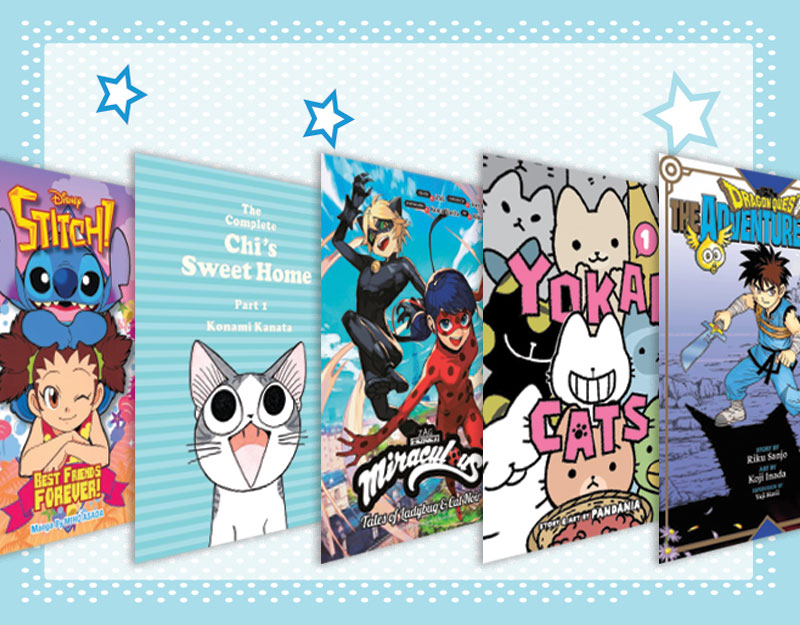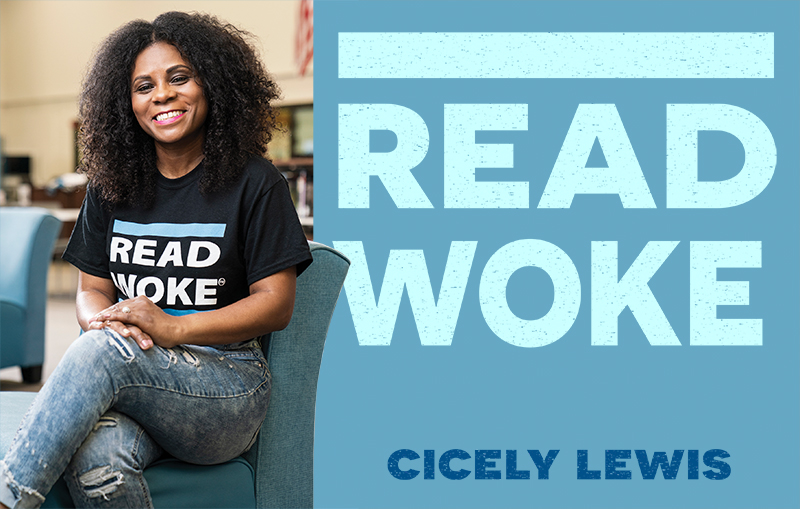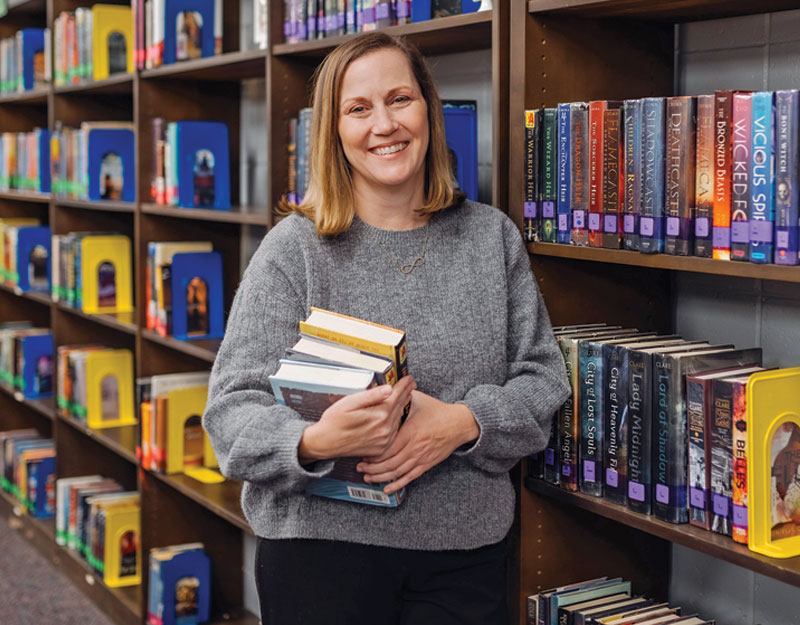This Year Let Books and Children Be Your Guide
 Imagine a town known for books and bookstores. At every turn you take along the winding roads, you spot another shop with more books in the window begging to be read by a curious reader. Book totes are at the entryway of every shop waiting to be filled. Clever shelf markers point you in new directions to transport you to another world or to fall in love with a book someone else recommends. Hay-on-Wye in Wales is the world’s largest second-hand and antiquarian book center in the world and home to the original Hay Festival (now a global phenomena) where literary enthusiasts and storyvores gather each year. This summer, Katie was fortunate to be one of the festival attendees where she was reminded in new ways that books and the children who read them are our greatest guides. Not teachers’ manuals. Not scripted curriculum. Books and children.
Imagine a town known for books and bookstores. At every turn you take along the winding roads, you spot another shop with more books in the window begging to be read by a curious reader. Book totes are at the entryway of every shop waiting to be filled. Clever shelf markers point you in new directions to transport you to another world or to fall in love with a book someone else recommends. Hay-on-Wye in Wales is the world’s largest second-hand and antiquarian book center in the world and home to the original Hay Festival (now a global phenomena) where literary enthusiasts and storyvores gather each year. This summer, Katie was fortunate to be one of the festival attendees where she was reminded in new ways that books and the children who read them are our greatest guides. Not teachers’ manuals. Not scripted curriculum. Books and children.
This summer at The Classroom Bookshelf, we’ve spent time rekindling our book love whether we attended festivals and conferences or just sat in our backyards with a book. Across our collective readings, we noticed that the world of children’s literature keeps changing. The artistry and imagination contained in illustrations invites us to linger on each page just a little bit longer. We find ourselves laughing out loud more, gasping more, and wondering more. We notice that diversity can be found on the pages of books with more regularity. It is our hope that this year as we share the books that have captured our attention and our hearts that you, too, notice the sea of change sweeping children’s literature. This year, let books and how they reflect your students’ lives and interests be your guide. Use books to respond to your students and to push their thinking forward. The writers and illustrators of children’s literature are reimagining what books can be. They are challenging us as educators to take risks, try something new, and capture the interest of today’s generation of growing readers.
ADVERTISEMENT
ADVERTISEMENT
The following are suggestions for ways that the changes in children’s literature can be our guide for changes in instruction–think of it as a recipe for book magic.
Images matter. This year, preview the picture book read-alouds you’ll use and mark pages where you want to invite students to linger over the illustration a little bit longer. Instead of waiting for the page to come, consider sharing an image from the book first to spark student predictions about what’s to come. Invite student voices to share what they see, think, and wonder about the image and how it might connect to the rest of the book based on the title. Create a picture book center where read aloud books can be pored over by students. Include sticky notes for students to mark pages where they noticed or wondered something and would like to share it with the class. If you have a document camera, foster literacy leadership in your students by giving them daily or weekly opportunities to share the illustrations that captured their interest. Support them to say more about the images and why they selected them by helping them talk about the use or absence of color, shapes, figures, connections, and disconnections. Look for an upcoming post this fall on Tiny, Perfect Things by M.H. Clark for more ideas about making images matter.
Playfulness matters. Classrooms where children feel free to laugh out loud are classrooms where students want to be. Books give us some of the most powerful laugh out loud moments. Not only does laughing out loud feel good but it also often shows that students are picking up on important inferences in books. Readers that pick up on the humor between Frog and Toad or Elephant and Piggie are making inferences without the need for explicit instruction on using your background knowledge and context clues. Encourage students to laugh out loud during read alouds and independent reading. Teach them that this is a sign they are inferring the humor the author intended. Support them to act out some of the humor through story drama. This allows them to tap into movement to express their understanding about books and characters that have meaning for them. Laughter is one sign of playfulness that authors and illustrations are working to create for their readers. Look for our post this fall on Square by Mac Barnett for more ideas about making playfulness matter.
Diversity matters. Invite your students to take stock of your classroom library and read aloud selections. Do the books represent diverse society? Do the books represent the students in your classroom? Do the books represent people of color in every day stories? Thanks to the hard work of many educators, publishers, writers, and scholars, particularly of color, diversity in children’s literature is becoming an expectation rather than a rarity. Support students this year to recognize that the hopes, dreams, fears, and aspirations of characters should be complex just like their own. Invite students to notice the ways books are shaping their worldview. What advice would they give to characters? Which characters feel like friends? Which books allow them to say “this feels like my story”? Look for posts this fall on La Frontera: My Journey with Papa by Deborah Mills and Alfredo Alva and Dreamers by Yuyi Morales for more ideas on how to explore diversity even further.
Novelty matters. As readers and as learners, we thrive on a balance between anticipated structure and novelty. A good story usually has something readers can relate to followed by something unexpected. Notice the ways that children’s literature offers readers of today something new and unexpected. Invite students to try something new this year–a new author, series, or genre. Create shelf markers along with your students that entice readers to give a new book a chance. In doing so, you can make your classroom library feel more like a bookstore . Also, consider the ways in which your instructional routine can utilize the power of novelty. If you traditionally have students read independently after a minilesson, what would it mean for students to read prior to the lesson? If students have reading partners, what if they partnered with someone else for new purposes from time to time? What if students got to select upcoming read-alouds by engaging in purposeful book browsing? If you routinely have students respond to books through writing, drawing, and talking, mix it up by having them respond through movement, drama, and the arts. As students notice the unexpected in their books, encourage students to embrace the unexpected in their own lives inside and outside the classroom. Finally, invite students to incorporate something novel or unexpected in their writing and illustrations. Look for our post this fall on The Day You Begin by Jacqueline Woodson for more ideas about novelty in our lives and how we can navigate new situations with grace and pride.
 We hope you’ll join us as we let books and children be our guide this year challenging us to reimagine what is possible for students. When you do, you’ll be on the pathway for creating a year of book magic for you and your students.
We hope you’ll join us as we let books and children be our guide this year challenging us to reimagine what is possible for students. When you do, you’ll be on the pathway for creating a year of book magic for you and your students.
Filed under: Classroom & Curricular Ideas
About Katie Cunningham
Katie is a Professor of Literacy and English Education at Manhattanville College. There she is also the Director of the Advanced Certificate Program in Social and Emotional Learning and Whole Child Education. Her work focuses on children’s literature, joyful literacy methods, and literacy leadership. Katie is the author of Story: Still the Heart of Literacy Learning and co-author of Literacy Leadership in Changing Schools. Her book Start with Joy: Designing Literacy Learning for Student Happiness will be released September 2019. She is passionate about the power of stories to transform lives.
ADVERTISEMENT
ADVERTISEMENT
SLJ Blog Network
Happy Poem in Your Pocket Day!
This Q&A is Going Exactly As Planned: A Talk with Tao Nyeu About Her Latest Book
More Geronimo Stilton Graphic Novels Coming from Papercutz | News
Parsing Religion in Public Schools
Environmental Mystery for Middle Grade Readers, a guest post by Rae Chalmers
ADVERTISEMENT







